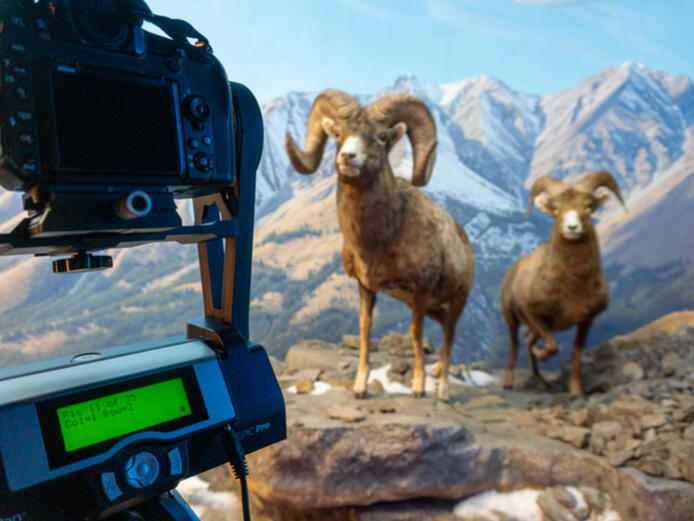Digitizing the Material World

It has been said that when we change the way that we see the world, the world that we see changes. Using new technologies we are able to visualize things that were once invisible and describe things that were once ineffable. Volumetric video, 3D scanning, super-resolution photography, thermal imaging, and photogrammetry are all examples of tools that allow us to capture new forms of experience. We are interested in using these tools in an effort to better understand them and, in the process, discover unimagined forms of knowledge, experience, and beauty.
Example Projects:
The Peabody Dioramas
With the Peabody Museum closing for renovations, Collin Moret and Michael Anderson wanted to find a way to ensure that the historically relevant dioramas of wildlife and natural environments could still be accessible in some way. Working with members of the Blended Reality community, thousands of photographs of the dioramas were used to build 3D photogrammetry models that could be accessible online and in virtual reality.
Collaborators:
- Collin Moret, Exhibition Media developer, Peabody Museum
- Farid Abdul, Technology Support Assistant, Blended Reality Laboratory
- Michael Anderson, Preparator (retired), Peabody Museum
- Justin Berry, Critic Yale School of Art and CCAM Core Faculty
- Kailen Rogers, Associate Director of Exhibitions, Peabody Museum
- Bobby Berry, Center for Collaborative Media and Arts (CCAM) and Tsai City Yale Innovation Fellow 2019-2020, Yale Alum ‘19
- Randall Rode, Director of Campus IT Partner Development, Yale University Information Technology Services
Links:
Read more about the Peabody Museum. And about the project.
Volumetric Capture Studio
By networking four Kinect Azure cameras that can capture both video and depth information in real time, students and faculty are going to create moving volumetric scans of people and objects. While the CCAM’s Leeds motion capture studio is capable of documenting movement, volumetric capture will allow for facial expressions and individual actors to be viewable in virtual and augmented reality.